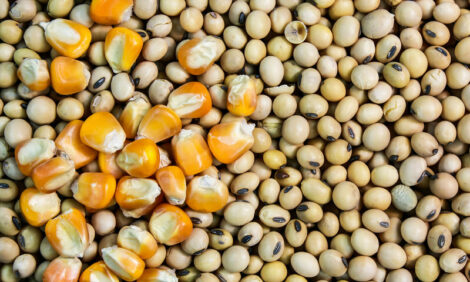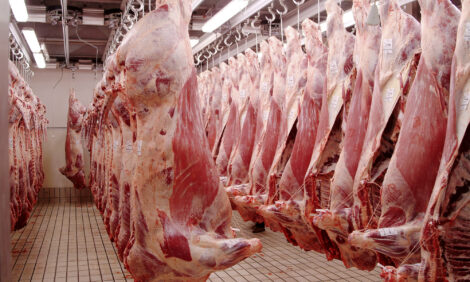



Effect of PRRS challenge on genetic analysis of reproduction traits in Yorkshire
Research from Genesus Genetics.Porcine Reproductive and Respiratory Syndrome (PRRS) has proven to be a persistent and adaptive viral adversary to the North American swine industry for over 30 years. Hypothesized to have arrived in North America as early as the year 1912 (Mayer and Brisbin, 2008), the virus has and continues to evolve independently of its European strains (Stadejek et al., 2002). After finding its way into the North American commercial herds, efforts for effective vaccination and control have proven difficult. Based on an estimated $660 million annual cost to the US swine industry (Holtkamp et al., 2013), reduction or elimination of the detrimental effects of the PRRS virus is a welcomed endeavor.
Host response to PRRS infection, and the variability between individuals to effectively combat effects of the disease, has been previously researched. Host response appears to be a promising area of study to potentially reduce the overall economic consequences of the PRRS virus. Boddicker and colleagues (2012) estimated moderate heritability in nursery pigs for host response to the viral load that was present post-PRRS challenge, and they identified a gene on chromosome 4 responsible for resilience to PRRS. Others have associated levels of gene expression with varying levels of phenotypic performance and viral load in response to PRRS challenge (Kommadath et al., 2017). Additional research efforts have estimated the heritability of traits and performance predictors during PRRS challenge (Serao et al., 2014, Sanglard et al., 2020). Results of these efforts suggest a genetic component to the host’s ability to guard against infection from PRRS, and having accurate estimates of trait relationships in the presence or absence of PRRS challenge can influence one’s ability to optimize selection for PRRS-resilient animals.
During a PRRS challenge, herd performance metrics have historically been, and continue to be, measured on affected farms. These accumulative measurements enable us to further understand the heritable genetic component of the within-trait variation which will provide valuable information to evaluate for genetic selection. From within the Genesus system of herds, information was collected from a PRRS-challenged farm where 4,418 litters comprised a dataset consisting of 1,364 purebred pedigreed Yorkshire sows. We focused on four key reproductive traits, including number of Liveborn, Stillborn, Mummies and Wean-to-service interval. Variance components and heritability were estimated using this dataset (Table 1). In all four traits, results indicate that genetic variation remains detectable during a PRRS disease challenge.
Table 1. Heritability (and standard error) estimates for reproductive traits of interest measured on purebred Yorkshire sows in two different environments.

Of most notable importance, genetic variance within traits measured in a PRRS-challenged environment does exist, providing the opportunity for genetic selection. However, small changes in the estimates between the two environments are observed. These differences are important to understand, as they can influence how emphases are placed on certain traits within a breeding objective tailored for selection of PRRS-resilient animals. Nonetheless, the observed heritability is important because with this affirmation of host genetic control over traits expressed and measured in this challenged environment, it proves plausible, genetic selection for animals that do perform better in this environment. With the advent of genomic technologies currently employed in Genesus genetic evaluations, a next step in utilization of this information is to predict genomic breeding values on animals not exposed to PRRS-challenged environments, for their genetic capability in PRRS-challenged herds.
Upon reviewing research topics aimed at PRRS control and immunity, efforts are derived from multi-disciplinary approaches, including virology, immunology, production, and genetics (Amadori et al., 2021). As a responsible industry partner, Genesus represents the discipline of genetics, as we apply our research in a translational approach for a more PRRS-resilient pig. Research efforts in disease resilience continue to be a focus of genetic improvement in Genesus swine populations.
| References | ||||
|---|---|---|---|---|
| Amadori M., Listorti V. and Razzuoli E. 2021. https://doi.org/10.3390/pathogens10091073 | ||||
| Boddicker N., E. H. Waide, R. R. R. Rowland, J. K. Lunney, D. J. Garrick, J. M. Reecy, J. C. M. Dekkers 2012. https://doi.org/10.2527/jas.2011-4464 | ||||
| Holtkamp D. J., Kliebenstein J. B., Neumann E. J., Zimmerman J. J., Rotto H. F., Yoder T. K., Wang C., Yeske P. E., Mowrer C. L. and Haley C. A. Assessment of the economic impact of porcine reproductive and respiratory syndrome virus on United States pork producers. J Swine Health Prod. 2013; 21: 72–84. | ||||
| Kommadath, A., Bao, H., Choi, I. et al. 2017. https://doi.org/10.1038/srep46203 | ||||
| Mayer, J. J., Brisbin Jr., I. L. Wild Pigs in the United States : Their History Comparative Morphology and Current Status. Pbk. ed. University of Georgia Press 2008. | ||||
| Sanglard Leticia P., Fernando Rohan L., Gray Kent A., Linhares Daniel C. L., Dekkers Jack C. M., Niederwerder Megan C., Serão Nick V. L. 2020. https://doi.org/10.3389/fgene.2020.01011 | ||||
| Serão NV, Matika O, Kemp RA, Harding JC, Bishop SC, Plastow GS, Dekkers JC. 2014. https://doi.org/10.2527/jas.2014-7821 | ||||
| Stadejek T., Stankevicius A., Storgaard T., Oleksiewicz M. B., Belák S., Drew T. W. and Pejsak Z. 2002. https://doi.org/10.1099/0022-1317-83-8-1861 | ||||






